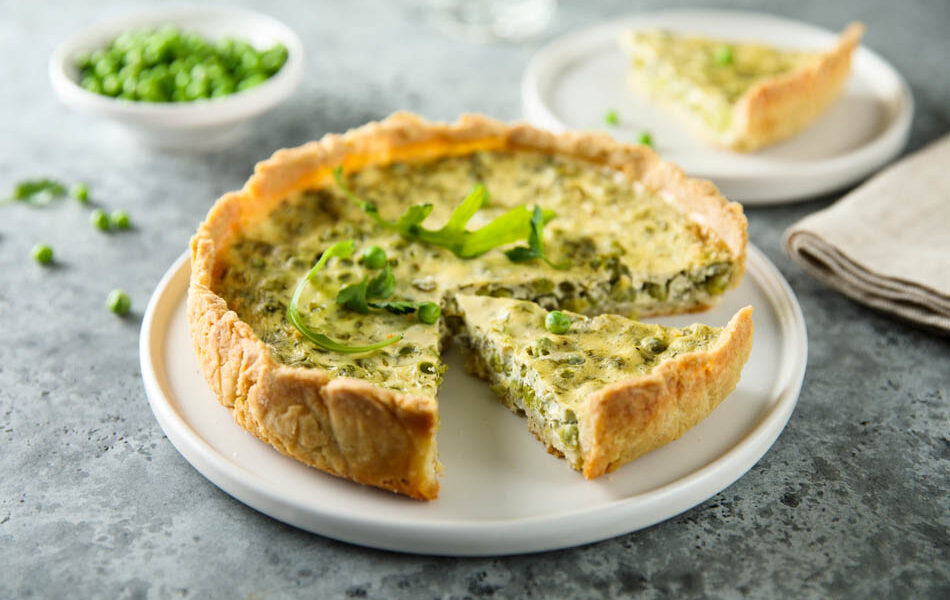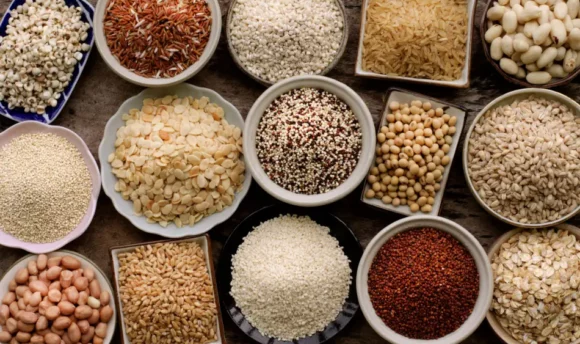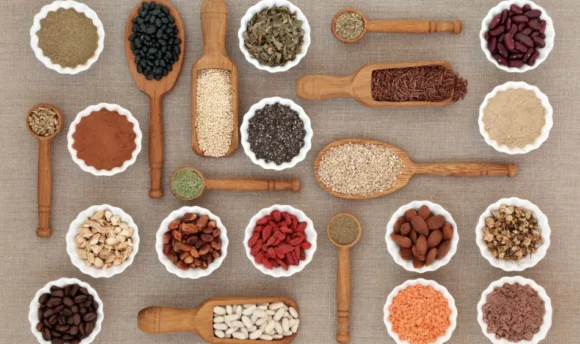Is Quiche Healthy? Benefits, Nutrition, and Recipe
Quiche is a popular breakfast favorite rich in savory and aromatic flavors. However, quiche may have some important implications for health. So let’s talk about it!

We all love a slice of quiche once in a while; whether it is full of bacon and goat cheese, ham and broccoli, onions and parmesan, the combinations of ingredients are endless. Favorites are Quiche Lorraine, crustless quiche, and more. Therefore, it makes sense that many wonders if quiche is healthy or if it is better off avoided.
This article will break down quiche’s benefits and downsides and discuss calories, fat, protein, vitamins and minerals, and much more. If you are interested in how to make quiche a part of a healthy and balanced diet, read on to learn more!
What Is Quiche?
Quiche is a beloved breakfast pie that consists of whipped eggs combined with cheese, meats, and veggies baked into a crispy and flaky pie crust. What results is a tasty combination that leaves many wanting another slice.
In addition to a breakfast favorite, miniature bite-sized quiches are often served as appetizers. These miniature pies may feature cheeses such as parmesan or gruyere cheese, meats such as Canadian bacon, prosciutto, or ham, and veggies such as green onion or peppers.
Is Quiche Healthy?
Quiche is not healthy because it often contains bacon, ham, cheese, and other ingredients that are high in sodium and fat. Additionally, quiche is typically high in calories and dietary cholesterol.
3 Health Benefits of Quiche
Besides what we have already mentioned, quiche can also have many health benefits. Let’s talk about some of the key players.
#1 It contains foods from many food groups
A significant benefit of quiche is its ability to include foods from many food groups, which helps your body get more of the vitamins, minerals, and other nutrients it needs.
A quiche contains:
- Protein and fat from the egg, cheese, and meat
- Starch and grains from the crust
- Fruits and vegetables
- Dairy from the milk or cream used in the egg mixture
The more fruits and vegetables you manage to add in, the better because you will be increasing the vitamin, mineral, and fiber content of your quiche.
While the quiche may not have the ideal balance of each of these food groups, it is beneficial that all groups are not excluded but are each represented in some way.
#2 It helps you feel full for longer
Another benefit of quiche is the combination of ingredients containing protein, fiber, and healthy (and unhealthy) fats can help you feel full when you eat quiche and stay full for longer.
According to the Mayo Clinic, foods with low energy density, meaning they have low amounts of calories in a large amount of food, can help you feel full on fewer calories.
Fruits and vegetables are high in water, leading to more food volume but fewer calories. Additionally, they are rich in fiber, which takes longer for your body to digest, making you feel full longer as well!
Adding more fruits and vegetables, such as broccoli, peppers, and caramelized onions, will make your healthy quiche filling and nutritious.
#3 It is a source of antioxidants
The last benefit of quiche that we are going to cover focuses on the antioxidant content in quiche. Quiche contains selenium and vitamin A, which are considered to have antioxidant properties.
A 100g serving of quiche contains 14.2 micrograms of selenium and 325 micrograms of vitamin A.
Antioxidants are compounds in the foods we eat that fight against harmful free radicals naturally produced in the body. A balance of antioxidants in your diet and free radicals in your body can help fight inflammation and oxidative stress.
Quiche Nutrition Facts
Now that we’ve discussed the main health benefits of quiche, let’s talk about the nutritional information, such as the calories, fat, and protein content, using a meatless spinach quiche as our reference.
Nutrition table (per 100g)
| Calories/Nutrient (per 100g) | Amount |
| Calories (kcal) | 297 |
| Sodium (mg) | 313 |
| Net Carbs (g) | 11.6 |
| Fiber (g) | 1.2 |
| Sugar (g) | 14 |
| Fats (Total) | 23.5 |
| Protein (g) | 10.6 |
| Cholesterol (mg) | 123 |
Source: https://fdc.nal.usda.gov/fdc-app.html#/food-details/1102100/nutrients
High in calories and fat
Let’s start by covering the caloric content in a 100g serving of quiche. For reference, 100g is approximately 2/3 of a slice of quiche that is 1/8 of quiche with a 9-inch diameter.
This amount of quiche has 297 calories. Well, you would be right if you think that barely 300 calories does not seem like that many!
However, for the very small amount of quiche in this serving size, you would quickly eat more than 100g of quiche. In other words, many individuals would soon double or even triple the calorie intake in quiche and maybe even eat the entire quiche.
Additionally, a 100g serving of the quiche has 23.5g of total fat. This high amount of fat likely comes partially from the eggs and the rest from the buttery and flakey pie crust.
Of the 23.5g of total fat, 12.7g are saturated fat.
The American Heart Association recommends consuming no more than 5–6% of your daily calories as saturated fat.
For example, if you need 2,000 calories daily, no more than 120 calories should be from saturated fat, equating to about 13g of saturated fat daily.
In other words, just one 100g serving of quiche already brings you to your maximum recommended saturated fat intake for the entire day.
Excess calorie intake and total fat consumption (including saturated fat) can lead to weight gain and an increased risk of heart disease, high cholesterol, obesity, and other chronic disease states.
A moderate amount of carbohydrates
Since quiche contains flour in the crust, it does have a moderate amount of carbohydrates.
A 100g serving of a meatless spinach quiche contains 11.6g of net carbohydrates.
However, making your quiche at home allows you to swap out the refined flour with whole-wheat flour, bulking up the fiber and nutrient profile of the quiche.
Additionally, including fruits in your quiche, such as tomatoes, can also add some carbohydrates. However, these carbs from the fruit come with so many vitamins, minerals, fiber, and water that they are very healthy for you and help make your quiche filling.
High in proteins
A 100g serving of meatless quiche also contains 10.6g of protein. Adding lean meat, such as chicken or turkey, can increase the protein content even more.
Since eggs are a great source of protein, even meatless varieties of quiche are considered high in protein.
Protein is essential in the body to help us grow and repair muscles, maintain body tissues, facilitate chemical reactions that occur in the body, and much more.
High in vitamins and minerals
While this depends on the specific ingredients you choose to include in your quiche, a 100g serving of quiche is rich in many vitamins and minerals, including calcium, phosphorus, potassium, and iron. So let’s talk about the functions of some of these micronutrients.
Calcium is a mineral that works with vitamin D to support healthy and strong bones and teeth. Phosphorus plays a role in strong bones and teeth as well.
A 100g serving of quiche contains 243mg of calcium and 199mg of phosphorus.
Iron is necessary to help the red blood cells in the blood transport oxygen to cells all around the body. On the other hand, potassium is an electrolyte that promotes fluid balance and healthy muscle contractions.
High in cholesterol
A 100g serving of quiche contains 123mg of dietary cholesterol. Remember that 100g of quiche are approximately 2/3 of a slice of quiche that is 1/8 of quiche with a 9-inch diameter.
Since cholesterol is produced in our liver, we technically do not need to eat any cholesterol to be healthy. Also, animal livers make cholesterol, leading animal products to contain dietary cholesterol, such as the eggs in quiche.
While there is no longer a set amount of cholesterol acceptable to consume daily, 123mg of cholesterol is relatively high.
In fact, the 2020–2025 Dietary Guidelines for Americans recommend consuming as little dietary cholesterol as possible.
According to the Mayo Clinic, all of the cholesterol in an egg comes from egg yolks. Therefore, if you want to decrease the amount of dietary cholesterol you eat, try making your quiche with egg whites.
Speaking of a homemade quiche recipe, let’s go through a tasty and healthy crustless quiche recipe to try next time you are craving this breakfast favorite!
Healthy Quiche Recipe
Have you ever wanted a quiche that tastes good and is good for you? Look no further! This crustless quiche uses egg whites instead of egg yolks and does not have a dough crust, leaving even more room for colorful fruits and vegetables.
Try out this delicious crustless quiche recipe!
Ingredients:
- 12 large eggs (whites only)
- 1/4 cup of reduced-fat sharp cheddar cheese
- 1 cup of sliced mushrooms
- 1/2 cup of chopped onion
- 1/2 cup of fresh or frozen spinach
- 2 tsp of minced garlic
- 1/2 tsp of black pepper
- 1 tbsp of extra virgin olive oil
- 1/2 cup of skim milk
Preparation:
- Preheat your oven to 350ºF/175ºC.
- Sautee your onions and mushrooms in a skillet pan coated with olive oil.
- Once they are tender, add spinach and cook for about 1 minute.
- Whisk together the eggs, milk, cheese, garlic, and pepper in a separate bowl. Once combined, add the vegetable mixture.
- Lightly oil a pie dish with cooking spray. Pour the egg mixture into the pie dish and bake for approximately 30 minutes until set.
- Cool for at least 15 minutes before removing from the pie dish, then serve.
For an even healthier alternative, swap some cheese for nutritional yeast. Nutritional yeast is a powder food product rich in iron, vitamin B12, fiber, and more, but it tastes similar to parmesan or cheddar cheese.
Overall, this crustless quiche can be customized with your favorite fruits and veggies and low-fat cheeses.
Want to see more healthy recipes? Check the DoFasting Nutrition app with more than 5,000+ healthy recipes.

- 5,000+ healthy recipes
- Healthy desserts
- Improved eating habits
- Calorie tracker to track daily caloric intake
- Full guidance on successful diet
FAQs
Quiche is not good for you because it is high in saturated fat, sodium, and more. However, easy substitutions can be made to make it healthier for you.
Yes, a 100g serving of quiche contains a whopping 23.5g of total fat; more than half of that amount is saturated fat. Additionally, quiche has 297 calories for a relatively small slice.
While the combination of ingredients possible is endless, common types of quiche are lobster quiche, Quiche Lorraine, Quiche Florentine, and mushroom quiche.
A Word From a Nutritionist
Quiche is a combination dish that includes many food groups, from protein and fat from the egg, cheese, and meat, carbohydrates from the crust, and even some vitamins and minerals from the ingredients, such as fruits and veggies.
In other words, quiche has much potential to be a healthy meal because you can customize it so easily, adding in more veggies and less salty and fatty meats and cheeses.
You could even make a quiche out of egg whites to decrease the fat content even more.
Quiche is a filling and satisfying dish containing some fiber, healthy fats, and tons of protein that help you feel full and stay full for longer.
Conclusion
In conclusion, quiche is a classic French dish that is enjoyed by many around the world. From the fluffy egg to the flaky crust, many include meats, such as ham or bacon, and cheeses, such as feta or Swiss, and vegetables, such as spinach and sweet potatoes, in their quiche pies.
The meats and cheeses can often add unwanted calories, saturated fat, sodium, and cholesterol to your meal, which can increase the risk of heart disease, including heart attack and stroke.
However, some simple swaps can make a healthier quiche, such as replacing bacon and ham with chicken or turkey and bulking up the quiche with lots of fruits and veggies.
Choose ingredients for your favorite quiche filling that you enjoy, and eat it in moderation.

















































 Select your language:
Select your language: 








